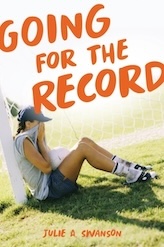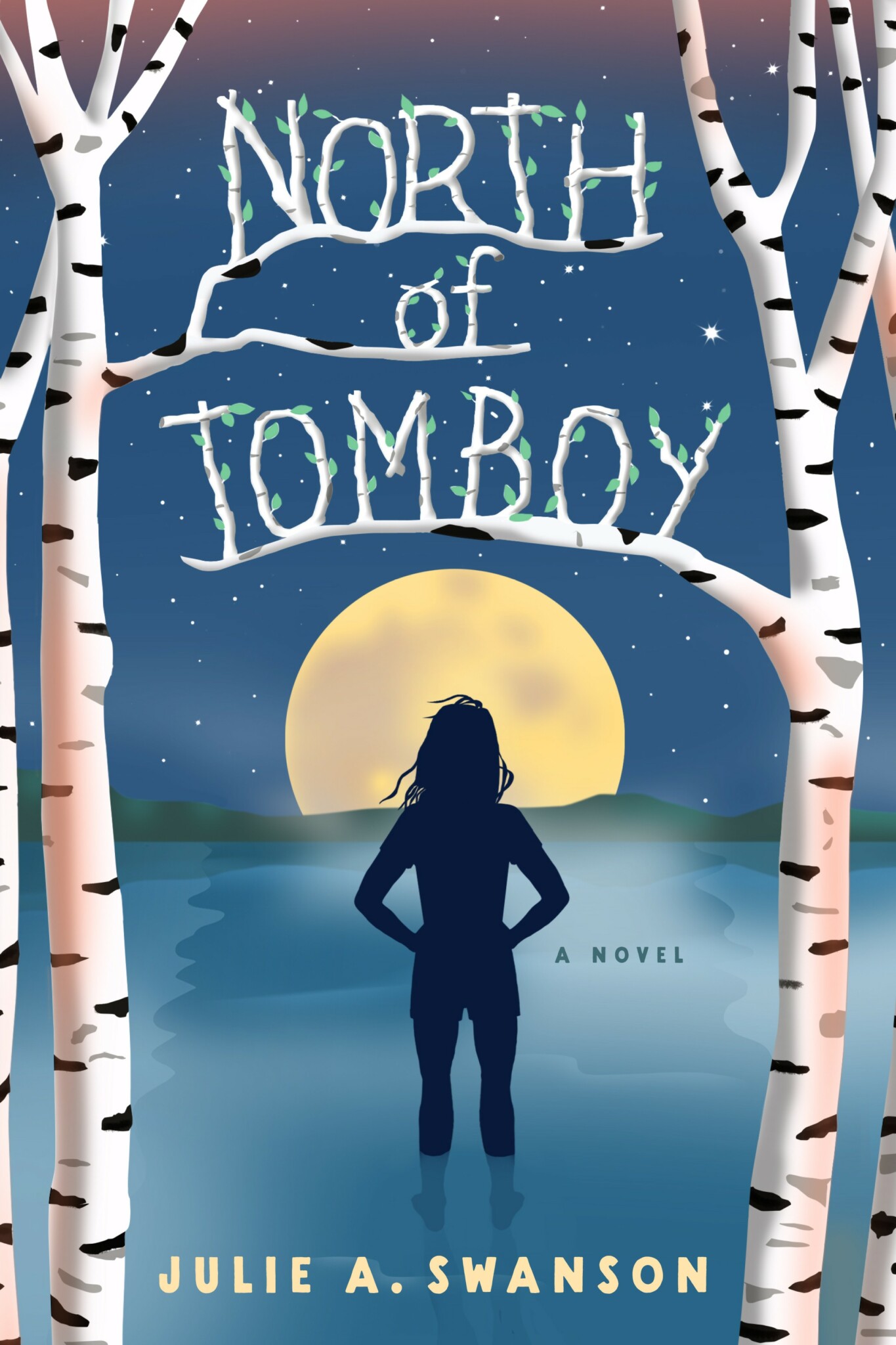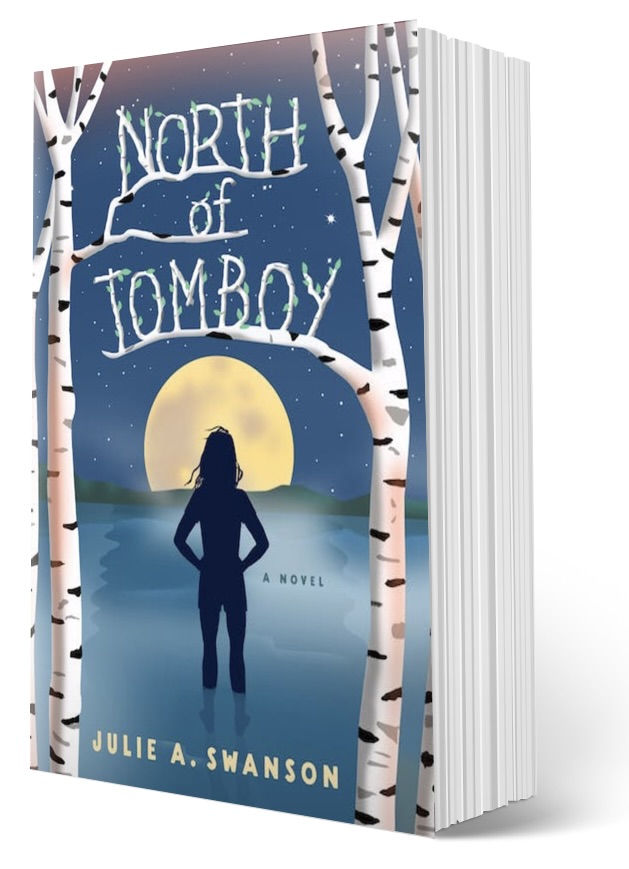We’re excited to introduce you to the always interesting and insightful Julie Swanson. We hope you’ll enjoy our conversation with Julie below.
Julie, appreciate you joining us today. So let’s jump to your mission – what’s the backstory behind how you developed the mission that drives your brand?
The reason I write, and write what I do, has to do with Toni Morrison’s quote, ““If there’s a book that you want to read, but it hasn’t been written yet, then you must write it.”
Growing up I could never find a book with a main character who was like I was. Still haven’t. Either the tomboys all become more lady-like, or they want to transition and use different pronouns, or they come to realize they’re gay… I wanted to write a story that was about gender, not about sexual identity–which it was for late-blooming me for many years. Although I suffered gender-dysphoria, I didn’t fit any of the current labels except for maybe “questioning” or “confused,” “gender-nonconforming” or “gender-variant.” And yet the discomfort of feeling like I was something different than what I was being forced to be was a discomfort I suffered every day. Physically I was somewhat androgynous–with short hair and the right clothes I’d easily passed for a boy–but my misogyny (yes, mine; I was a misogynist as a kid! Although I know I didn’t come to that all on my own…); that and our sexist, patriarchic culture made it harder for me to identify to as a girl than any of my androgynous tendencies did. This story really sticks to the issue of gender identity, and it ends rather open-ended in that regard, with the main character finally taking action and feeling empowered to express her authentic self better, but just beginning to accept and integrate both her masculine and feminine sides.
I also never read any books as a kid with characters in them who had long and often-mispronounced Polish last names ending in -ski like mine did (Polakowski, actually not hard to pronounce but intimidating looking?). So I promised myself I would make all, or at least most, of my main characters have Polish last names like that.
So I guess my mission has been to write the books I was looking for and could’ve used–even needed–as a kid. I know there are other kids out there struggling with the same thing, and if they could see themselves in a book, hopefully they’d feel less alone, more understood.

Julie, before we move on to more of these sorts of questions, can you take some time to bring our readers up to speed on you and what you do?
I wanted to be a writer from early on. In second grade, I began writing and illustrating stories. I entered poetry contests, wrote poems for the fun of it. In fourth grade my mom got me one of those blank-paged hardback books they sell for journaling in, and I wrote and illustrated a story with all the professionalism I could muster. When it was done, I gave it to my mom and told her to send it some place where they would publish it. I’m not sure what she did with it, but she didn’t say no, and I must’ve just forgotten about it. Anyway, I kept writing through middle school and high school, but not as many stories–more poems, journaling, essays. When I met with our high school guidance counselor to discuss what I’d study in college and I told him I wanted to be a writer (among other things—a pro basketball player, an artist, teacher, coach, a biomedical engineer who’d design realistic-looking body parts for people needing prosthetics…), he shot down that idea, telling me I didn’t want to be a starving artist and I should instead focus on my strengths in math & science since they were looking for women in those fields. So that’s what I did, but I ended up hating the computer classes required for engineering and instead applyied all those math/science credits I’d piled up toward becoming a high school math and science teacher.
However, in college I kept journaling and took writing and art classes as electives, and after college I immediately started writing stories again, thinking I would write and illustrate picture books. When I wasn’t teaching or coaching (basketball, the sport I loved and played through college) or hanging out with my new husband (I got married three months after graduating), I worked on writing and illustrating a story that meant a lot to me.
When our first daughter was born three years later, I decided to quit working (at this point I was an assistant women’s basketball coach at Dartmouth College) to stay home with her (and concentrate on my writing in my free time). I took courses through the Institute of Children’s Literature and quickly learned that I was not a picture book writer, was more suited and interested in writing novels for middle grade and young adult readers. So all through the 90s I wrote whenever I could (had two other babies) and began submitting. I got some encouraging rejections, even a couple requests for revisions, one of which led to my first YA novel being published in 2004 (GOING FOR THE RECORD, Eerdmans Books for Young Readers). Then I had a long dry period, in terms of outward success. I had an agent briefly and was really excited about that, but it wasn’t a good experience, and I lost a lot of confidence for a while after that, was reluctant to even try for another agent. But I kept writing and writing. In 2021 during Covid, Eerdmans contacted me saying they wanted to publish a second edition of GOING FOR THE RECORD, which had sold well before going out of print in 2014. I said sure, and that was a bright spot. But then I began to tire of the hopeless feeling of being rejected over and over again when I had a story I felt strongly about (the first a series, a series where I’d already written several of the other books), so I began to consider self-publishing or hybrid publishing. I had thirteen novels written at this point and was approaching sixty and just decided there were some books I wanted to get out there for kids before I got too old or died, and I didn’t want my life’s work to have been a waste of time. But that’s a huge leap to make when your whole writing peer group publishes traditionally and that’s the goal and you know self-publishing and hybrid publishing are often looked down upon, seen as settling. But I hadn’t made much money on the book I’d published traditionally and that had sold well, so I realized this wasn’t about money. It was about getting a book out for kids, and so I shouldn’t care what other people think, how they might judge my decision to possibly pay more for the making of a book than I could earn back. That’s where I am–hybrid publishing a story that I’ve worked on forever, a middle grade novel, NORTH OF TOMBOY, coming out September 2025 (but now available for pre-order). And except for the fact of having to pay initially rather than getting an advance (a small one probably, like my first book, like the average writer gets), it’s been a great experience so far!
Can you share a story from your journey that illustrates your resilience?
Well, I already told you about this to some extent, but basically what I’d say here is that I started writing a story in 1987 (which I thought was a picture book), and I kept at it, and the story kept morphing into different versions of itself, and it’s just now being published in 2025, thirty-eight years later. It was a difficult story to write–way more difficult than the twelve other novels I’ve written. I struggled to find the right way to tell it. I started out telling in third person past tense, went to first person past, then first person present, and back again to first person past, based on an editor’s advice)… before finally settling on first person present. It wasn’t just the POV I struggled with; it was where to begin, whether to tell it as a historical or a contemporary story (I tried both, settled on historical)… I was told the main character was too young at 9/10, make her older, twelve is the ideal age for middle grade. I tried rewriting it with her at twelve… I could go on and on here, explaining all the different ways I tried to approach it, the different versions of it I’ve written, the freelance editors I consulted and got assessments from, the book coach I worked with. There were many times I considered whether it might be wise to give up on it, when I wondered if I’d wasted all those hours and years and if I wanted to go on pouring even more time into it. Was this one story really that important in the grand scheme of things? But in the end, I felt so driven to write this. I couldn’t give up on it; it wouldn’t let me forget about it. I’d take breaks from it for a year or a two at a time to work on other stories, but I’d always come back to it. It itched at me, wanting me to come back to work on it. In the back of my mind, I was thinking about it even while working on other things, making notes so I wouldn’t forget this or that new idea when I went back to it. And I’d be so happy when I returned to working on it. And I’d get the new version to a stage where I thought it was ready to submit. Rejections, repeat… Thirty-eight years is a long time.

How about pivoting – can you share the story of a time you’ve had to pivot?
Again, I already told you about this, but I made a long story short, so a bit more on it:
I belong to a writers group, have belonged to the same basic writers group since 2000 or 2001 (people have come and gone, but the core of it has been together since then). At first none of us were published traditionally, although we’d had articles published in magazines and one had self-published a novel. But before we knew it, we were getting books published, picture books and middle grade and YA novels. Several of our writers group members have published a good number of books now, seven or eight or more. Most of them got agents and went on to have successful careers, are publishing still, new books coming out every year or two it seems. It’s hard to be a member of a group like that when you’re its least prolific member! I would hear them talk and read what others on message boards had to say about self-publishing–it seemed like something they would never do (or do again), didn’t think was wise. The attitude among most traditionally published authors, the attitude I had, was “if you can’t get a traditional publisher to be interested in your book, it must not be good enough; keep working at it and resubmit or move on to something else, something better. Gatekeepers are there for a reason.” So when I began to feel hopeless about my chances of ever getting this story published traditionally and I was in my mid-50s and approaching 60, thinking about my life’s work and what it would amount to or whether it would all be a waste of time (I enjoy writing, but not endless rewriting and revision, and my goal was not just to get the stories out of me and write them down, but to share them with kids who could use them, as I definitely could have when I was young)… Well, that was a pivot point for me. About six years ago, I began to seriously consider self-publishing or hybrid publishing, to look into the differences between the two and decide which might be the way I wanted to go–despite what I knew others might think of that. I know there are a lot of self-published books out there that are bad. I’ve read them. But I also know there are many that are very good, as good as anything traditionally published. After reading a lot about both self- and hybrid-publishing, I decided I liked the idea of hybrid-publishing more, because 1.] you still have to submit your story (both hybrid publishers I submitted to said they only accept about 10% of what’s submitted) and therefore it’s being vetted and it’s not like they’ll publish any old thing sent to them (my book also had to go through copyediting and after they accepted it; then it was proofread), 2.] hybrid publishing gives your book a chance at being reviewed by the big reviewers that review traditionally published books, while those reviewers won’t consider self-published books (unless you pay for a Kirkus review or other paid reviews, which are not the big ones I’m referring to; I do not look down on paid reviews, however!), 3.] and since your book can get reviewed, and possibly get good reviews, there’s also a chance your book could make it’s way into bookstores and libraries rather than just being sold online, 4.] I wanted and needed help with all the things about self-publishing that I knew would frustrate me, the high-tech red tape I wouldn’t be good at doing all on my own. But hybrid-publishing is expensive! And committing to that, investing in myself and my story like that, was terrifying. It felt like closing my eyes and leaping off a cliff, trusting that there was water down there. I came up smiling, though. The water is cold but refreshing!
Contact Info:
- Website: https://wwwjulieswanson.com
- Instagram: jules9swanson
- Facebook: Personal– https://www.facebook.com/julie.a.swanson.9/ Fan/Author page–https://www.facebook.com/profile.php?id=61559291484296
- Linkedin: Julie Swanson–https://www.linkedin.com/in/julie-swanson-3b634439/
- Other: blog–
https://julieAswanson.wordpress.comBluesky–
@jules9swan.bsky.socialThreads–jules9swanson

Image Credits
Arnel Gonce Photography (for my author photo)


